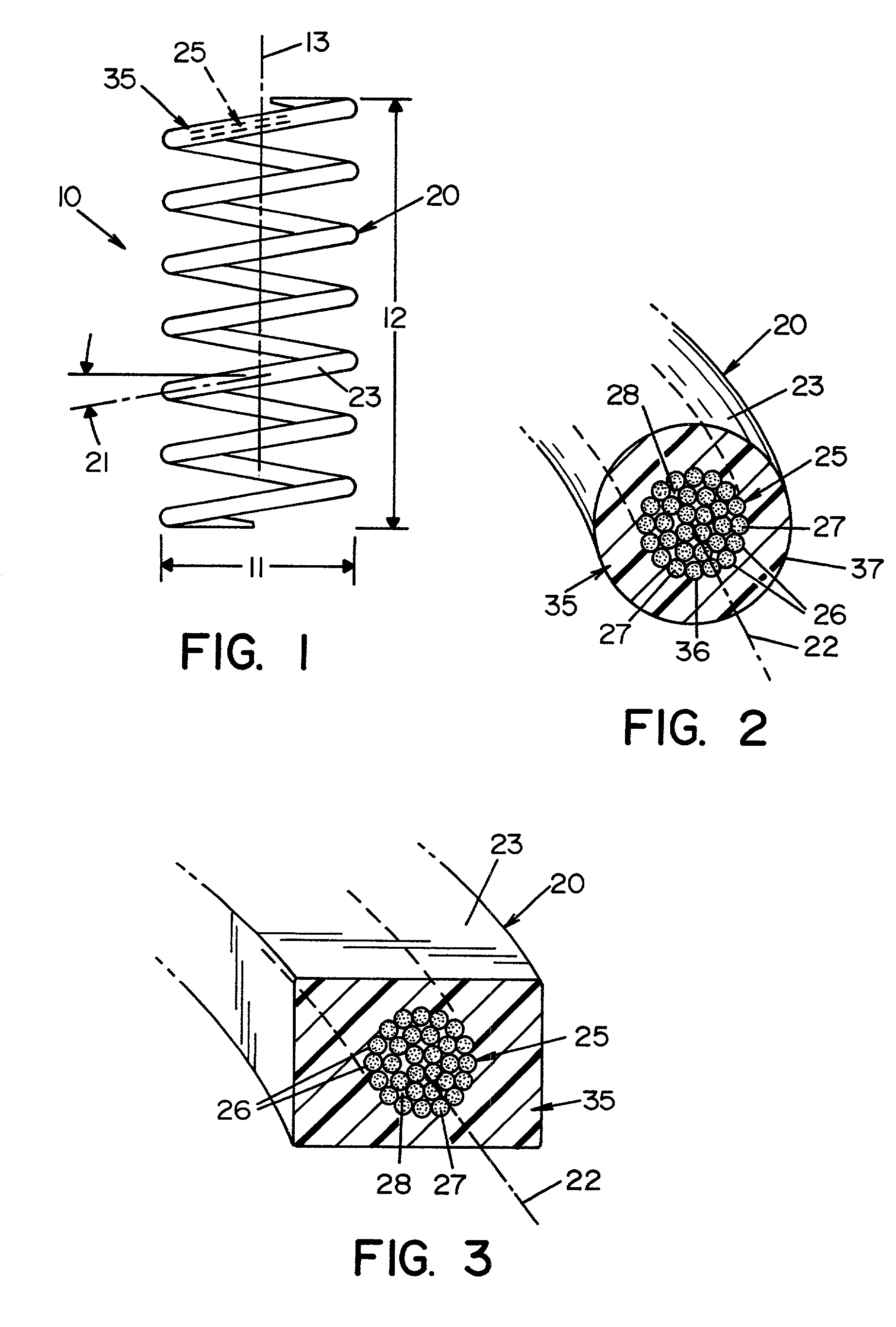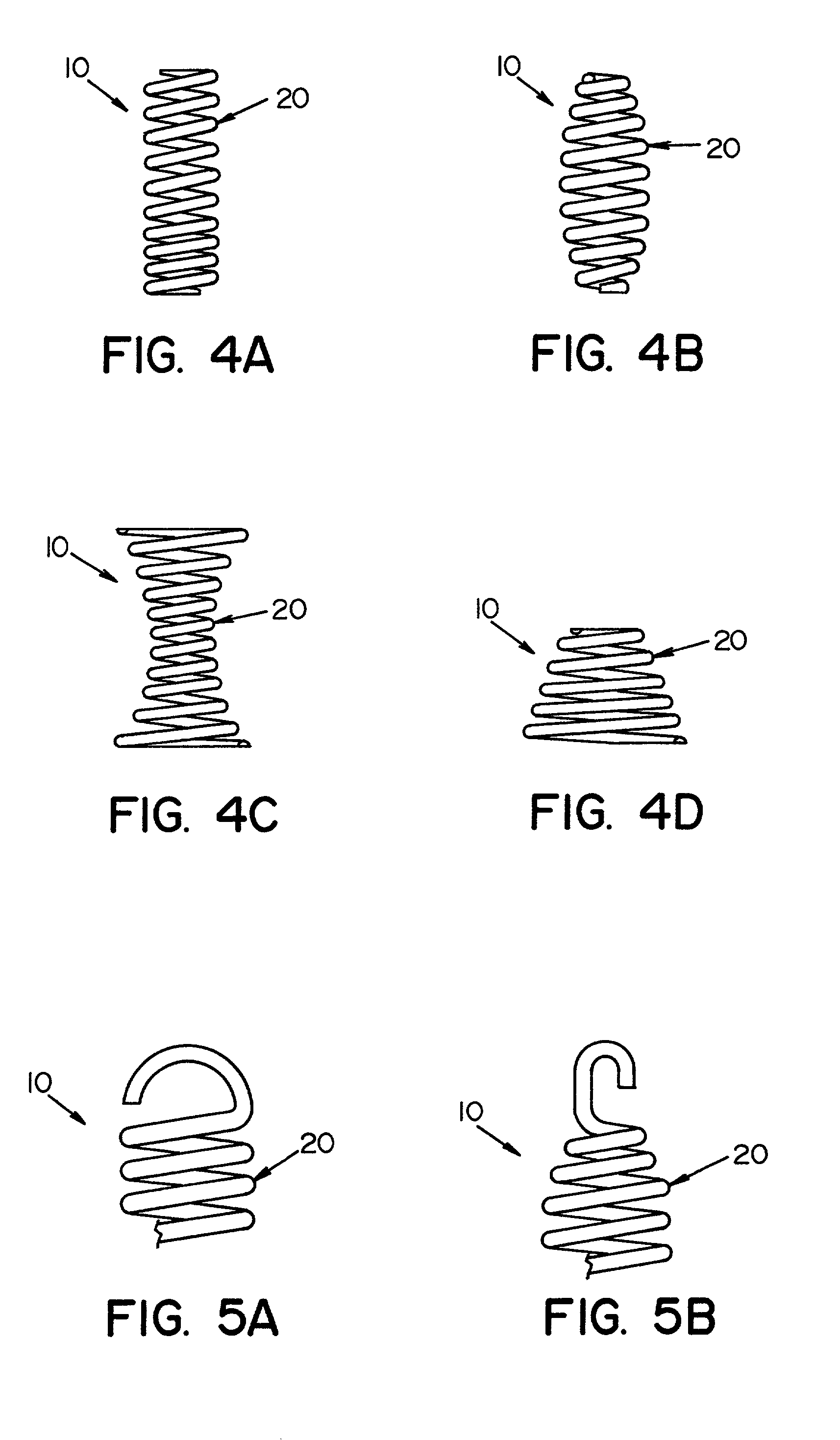Fiber-reinforced composite springs
a composite spring and fiber reinforcement technology, applied in the field of fiber reinforcement composite springs, can solve the problems of increasing fatigue life and achieve the effect of increasing fatigue life and predicting load versus deformation behavior
- Summary
- Abstract
- Description
- Claims
- Application Information
AI Technical Summary
Benefits of technology
Problems solved by technology
Method used
Image
Examples
Embodiment Construction
[0013] The fiber-reinforced composite spring of this invention is shown in FIG. 1. Spring 10 includes a coiled spring wire 20, which is coiled at a helix angle 21. The cross-section of spring wire 20 is shown in FIGS. 2 and 3, where fiber-reinforced core 25 and an outer layer 35 are shown.
[0014] With reference to FIG. 1, spring 20 has a coil diameter 11 and a length 12. Both coil diameter 11 and length 12 can vary based upon the desired application. Likewise, helix angle 21 can vary based upon the desired application. Varying helix angle 21 within the same spring will result in a variable rate spring as shown in FIG. 4A.
[0015] Also, coil diameter 11 can vary along the longitudinal axis 13 of spring 10. For example, if the coil diameter decreases towards both ends of the spring, a barrel will be formed as shown in FIG. 4B. If the coil diameter increases towards both ends of the spring, an hourglass spring will be formed as shown in FIG. 4C. If the coil diameter increases toward one e...
PUM
| Property | Measurement | Unit |
|---|---|---|
| winding angle | aaaaa | aaaaa |
| speeds | aaaaa | aaaaa |
| speeds | aaaaa | aaaaa |
Abstract
Description
Claims
Application Information
 Login to View More
Login to View More - R&D
- Intellectual Property
- Life Sciences
- Materials
- Tech Scout
- Unparalleled Data Quality
- Higher Quality Content
- 60% Fewer Hallucinations
Browse by: Latest US Patents, China's latest patents, Technical Efficacy Thesaurus, Application Domain, Technology Topic, Popular Technical Reports.
© 2025 PatSnap. All rights reserved.Legal|Privacy policy|Modern Slavery Act Transparency Statement|Sitemap|About US| Contact US: help@patsnap.com



